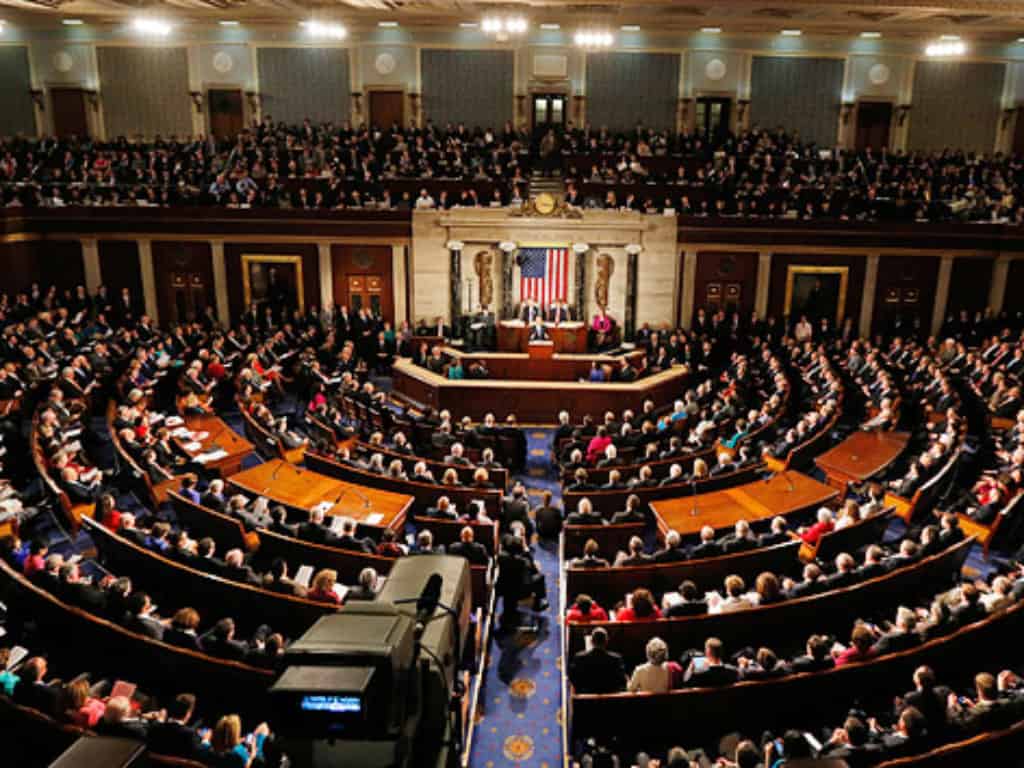
Recently, thoughts about the ideal size of government have been nagging me everywhere I look.
As I read Jim Jenkins’ editorial column on Terry Sanford, I could not help thinking about the size of North Carolina in the early 1960s–at 4.5 million people, it was less than one-half of what it is today–and how that affected some of Governor Sanford’s legacy programs like the North Carolina Fund.
Similarly, as I was enjoying the Hamilton soundtrack one afternoon, I found myself trying to imagine the landscape of the U.S. in the 1790s. In my under-informed mental picture, I guessed there were about 10 million people living between Virginia and Boston, where much of the core political action was located. It turns out that there were fewer than 3 million people in that area at the 1790 census and fewer than 4 million in the entire country. That means that there are about as many people in the Raleigh-Durham and Charlotte metropolitan areas as there were in the entire state in 1960 and the entire country in 1790.
Economists often talk about whether corporations can become too big to fail, but can a political geography grow to be too big to govern? Regardless, if we wanted to explore the idea of changing our current context of government, how would we do so peacefully? From a policy point of view, there seem to be four basic options.
Reduction
As libertarian-leaning politicians suggest, we can reduce the overall amount of governance and allow people more autonomy. This need not be a full-scale, Darwinian movement. A reduction in government can, in theory at least, co-exist with communitarian ideals.
In his recent book, The Fractured Republic, conservative Yuval Levin writes about the need to find middle ground between the glorification of the individual and the glorification of the federal state. His solution, as is also propelled by communitarian thinkers, is to strengthen the subsidiary organizations that support people and families outside of government.
From an implementation perspective, the reduction of existing governmental structures is the easiest transformation option to execute. In fact, in states where libertarian-leaning officials control the legislative process, planned reductions have already occurred.
A reduction in government, however, creates a practical issue that many proponents miss: the danger of going too fast down the path. Whether in business, personal matters or government programs, complex systems take time to wind down. As technology allows for immediate results in many other facets of our lives, it is easy to lose sight of this macro-reality. Should we continue to move forward to reduction, we must do so deliberately and with a clearly communicated vision about the new expectations for our citizens.

Rebalance
Alternatively, we can redistribute the balance of power between existing institutions. This would acknowledge that it is not so much our structure but the way that we have grown that creates issues. Imbalance is acutely felt at the federal level, where our system gives disproportionate strength to smaller states. Similarly, there are those who feel passionately that the answer to our problems is to give local governments more autonomy. Others long for a shift towards states’ rights and to give the states more freedom to act in lieu of the federal government.
There are a lot of common sense reasons to consider rebalancing the weight of our institutions. Doing so is also relatively easy to execute. There are, however, two points that often get lost in the discussion. First, this is a prototypical “grass is always greener,” argument. Federal supremacists long for expertise. Local supremacists wish for easier access and smaller scale. Both have merit, but it often seems like the critique of the balance of power grows louder after a specific political result, which often is as much a function of individuals as a function of structure.
For example, in the throes of the HB 2 debacle, conservative supporters of the legislation were outraged at the Charlotte City Council’s underlying action, while opponents, many of whom were liberal leaning, were frustrated at the state’s intervention in a local matter. Take many of those same interest groups and switch the issue to fracking, and I would wager that a decent portion of the anti-HB 2 population embraces state regulation, while a similar number of HB 2 proponents would prefer more local autonomy on land use and environmental decision-making.
Second, it is important to acknowledge that North Carolina has a heritage of a strong state government and that has often served us well. For example, following the Great Depression, North Carolina had the highest number of municipal bankruptcies in the country. To address that issue, the state established a state-run Local Government Commission to oversee and advise local governments on public finance matters. The system is partially responsible for North Carolina’s top reputation for public finance.
This strong state-oriented heritage is meaningful and is worth accounting for if we consider any shifts towards a more local or federally-oriented balance. That said, we must also be careful that the institutions of one era do not limit the balance for the future.
Restructure
Another idea is to restructure existing institutions to better represent today’s political reality. Restructuring would involve maintaining core institutions but reconfiguring them to better represent today’s context. Are we really four North Carolinas? Do 100 counties make sense in today’s urbanizing and technology-filled culture?
There is a movement in the state of California to restructure how that state operates. The website Six Californias provides a good overview for some of the logic and practical elements involved with restructuring.
Restructuring political geography is harder than rebalancing or reducing. It requires dismissing frames that are hard-wired—both personally and bureaucratically. It creates costs, known and unknown, that will always feel difficult to justify.
Yet at the state level, an incremental restructuring is easy to imagine and would allow the citizenry to build up to greater change. For example, North Carolina could create a regional overlay that would coordinate existing services in a consistent way. Cities, counties, and other lines of demarcation could continue to be relevant in the short-term, while the state tries on a regional system for dispersing programs. Many state agencies already do this in some fashion, however, there are few consistencies between these regional breakdowns. If a new political geography made sense after the initial shift, then the costs and disadvantages of a more holistic restructuring would be easier to accept.
Such incremental restructuring could also work at the federal and local levels.
Rebuild
Finally, we can do a full-scale redesign of our government systems, take nothing as given, and participate in a 21st century constitutional convention. There are clear advocates for this step. And while it seems ludicrous at first blush, how far is that from what Britain did with the Brexit vote or what Europe did in 1990s with the implementation of the European Union?
As we are observing in Britain, it is clear that a rebuilding effort must take place over a period of years. Closer to home, we have seen the instability created in the healthcare system following systemic changes over more than eight years. A fundamental reconstitution of our governance system should thus span multiple political cycles and even multiple presidencies. One could imagine a scaled-up process similar to how the Uniform Law Commission evaluates model laws.
Uniform Law Committee Drafting Process
Each uniform act is years in the making. The process starts with the Scope and Program Committee, which initiates the agenda of the ULC. It investigates each proposed act, and then reports to the Executive Committee whether a subject is one in which it is desirable and feasible to draft a uniform law. If the Executive Committee approves a recommendation, a drafting committee of commissioners is appointed. Drafting committees meet throughout the year. Tentative drafts are not submitted to the entire ULC until they have received extensive committee consideration.
Draft acts are then submitted for initial debate of the entire ULC at an annual meeting. Each act must be considered section by section, at no less than two annual meetings by all commissioners sitting as a Committee of the Whole. With hundreds of trained eyes probing every concept and word, it is a rare draft that leaves an annual meeting in the same form it was initially presented.
To prevent chaos and instability, there would need to be many years of commitment and process, not to mention a plan for how a convention could connect to and communicate with citizens. It certainly would not be easy and maybe untenable to get the necessary buy-in for 300 million people. On the other hand, we are in uncharted waters for the size and sustainability of representative democracy. Regardless of one’s political philosophy, recent national and international political activities have demonstrated that these questions are bubbling up to our popular consciousness.
Our country and our state are not so much broken as they are outdated. We sit on the precipice many families regularly face: do we repair and rebuild our existing political vehicle, or do we look for a newer version that better represents our national family’s needs? History is unequivocal. At some point, the vehicle will break down. The question is, will we acknowledge the problem while there is still time address it? Or do we wait until the chassis breaks and we find ourselves stranded on the road somewhere in a full-blown emergency? There is time, and there are ways to be proactive. Will we seize the day?
Weekly Insight Balancing Act Demographics Politics State Government

